Considering the current state of Earth, the 2020s may be remembered as a decade that started with one of the worst wildfires in history and then went downhill from there.
Or it might be the decade when society pulled things together, used revolutionary science to solve major problems, and tapped into stores of knowledge stretching back generations to remember a healthier way to interact with Earth.
There will be bad news. The Australian bushfires that had burned more than 84,000 square kilometers (32,000 square miles) by early January 2020 will be followed this decade by a confluence of tidal events that could imperil coastal communities on the West Coast of the United States. They may then be followed by just the second documented extinction of a cetacean in history and global CO2 levels surpassing another ominous milestone before 2030 is reached. Researchers at Scripps Institution of Oceanography at UC San Diego say Lake Mead might run short of the water that supplies 25 million users in three southwestern states.
Some developments in science will take place because climate instability has progressed to a point where conventional climate risk mitigation approaches are no longer sufficient. Researchers predict that the prospect of extreme interventions will become a new concern of climate scientists as the need for solutions becomes immediate. Geoengineering, which had seemed to scientists for decades as a foolish tinkering with nature not worth serious consideration, will become a formal area of study. The National Academy of Sciences is expected to produce guidelines this year for how such work can be done while minimizing unintended consequences. At Scripps, marine geoengineering will be explored this spring as a means to enhance the ocean’s ability to take up excess carbon dioxide and to reflect more solar radiation back into space.
“This is the decade when climate change disruption is really going to be a big issue globally and start to affect millions more people in significant ways,” said Scripps Oceanography glaciologist Helen Amanda Fricker. “And towards the end of last decade, scientists started to speak up about it, because we if we aren’t the ones to do this, then who will?”
“The 2010s were the decade when the taboo against talking about climate adaptation was broken—in part because so many places in the world realized that decarbonization was hard and serious international cooperation on the same was even harder. That lesson meant that the planet would be in for a lot of warming and other impacts,” said David Victor, a professor of international relations and industrial policy at UC San Diego’s School of Global Policy and Strategy and an adjunct Scripps Oceanography professor. “I suspect that the 2020s will be the decade when those realizations lead to a lot more focus on what we do when the wheels come off the bus.”
But across Scripps Oceanography, researchers also anticipate the decade will see inspiring advancements in ocean and earth science. They range from improvements in aquaculture that will supply society with more food, instrumentation that will enable unprecedented depictions of ocean dynamics, inexpensive sampling techniques that will allow researchers to quickly evaluate biodiversity in given ocean regions, artificial intelligence that accelerates drug discovery, and innovations in monitoring sea-level rise and erosion that protect coastal businesses and infrastructure.
Here then is a preview of the highs and lows of the 2020s as Scripps Oceanography scientists see it.
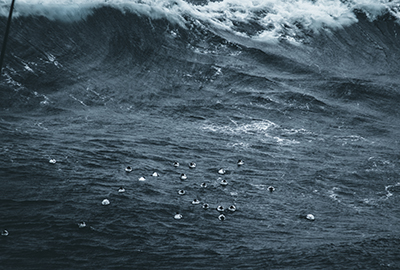
1. The decade of ocean science begins...
The United Nations has designated the 2020s as the Decade of Ocean Science for Sustainable Development. The Ocean Decade has societal goals including ensuring a clean ocean and a sustainable, productive ocean. This high-level visibility for the problems and potential of the ocean and the role of science in addressing those problems also comes at a time when the UNFCCC 25th Conference of the Parties (COP25) took first steps to consider how the ocean should be brought into negotiations because of its enormous role in climate. These two developments will mean that oceanography research will be called on to go beyond its traditional emphasis on hypothesis-driven research. It will need to add research that is motivated by solutions that make ocean ecosystems and ocean-human interactions more sustainable, said Scripps Oceanography Director Margaret Leinen, a member of the Executive Planning Group advising the process.
“The next decade will certainly marshal the ocean science community around some important science efforts for sustainability,” said Leinen, “but I think that an equally important outcome will be the use of the Ocean Decade to focus attention on the ocean and the way that it affects the lives of everyone in the planet — even those who lives thousands of miles from the ocean. If everyone understood how powerfully they are influenced by the ocean and its ecosystems, I think that we would all be more thoughtful and careful about our actions and how they affect the ocean.”
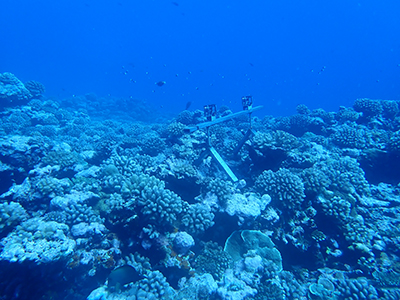
2. ...And the decade on biodiversity wraps up
The UN Decade on Biodiversity ends this year. It set the stage for aggressive efforts to restore ecosystems and create a means through which a transition to sustainable development can be achieved. Of special interest to researchers like Scripps biological oceanographer Lisa Levin is a biodiversity treaty under negotiation to expand the UN Convention on the Law of the Sea. The treaty would make legally binding rules governing conservation and sustainable use of ocean regions beyond national jurisdictions. The law would enable the creation of large marine protected areas, require environmental impact assessments for industrial activities, and provide oversight of marine genetic resources in international waters.
“This new treaty would protect biodiversity in the 60 percent of the ocean that is least explored and most pristine,” Levin said. “We need these ecosystems to remain healthy so the ocean can contribute to the well being of future generations.”
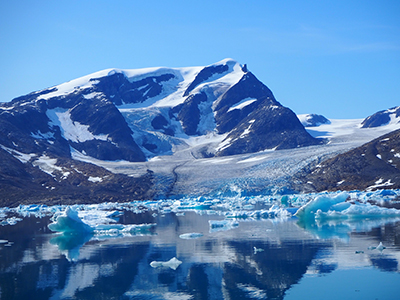
3. How much, how fast? Ice sheet melt will produce more sea-level rise
Ice sheets in Antarctica and Greenland are continuing to diminish at unprecedented rates, which means seas will rise proportionally. In upcoming work, Scripps’ Fricker and colleagues show that the loss of 500 gigatons of grounded ice from the Greenland and Antarctica combined in the last 20 years have already added 14 millimeters (0.5 inches) to sea-level height. For Antarctica, two-fifths of the mass loss was from floating ice which does not add to sea level directly, but leads to grounded ice loss and sea-level rise. Late last year, Fricker and others reported that there is virtually no lag between ice shelf thinning and grounded ice response.
Scripps Polar Center researchers will continue their work to collect data in the frigid oceans surrounding these ice sheets to understand what is driving the mass loss. The decade will see efforts to combine satellite and field data with models to quantify the loss with improved accuracy, to a point at which polar research will directly feed into decisions about how coastal infrastructure will need to be managed – which could mean anything from fortification to relocation or abandonment.
"It is vital to keep monitoring the ice sheets and the oceans that surround them so we can see how they are changing, so that we can understand what is causing them to change and ultimately better predict how they will evolve in the future,” Fricker said.
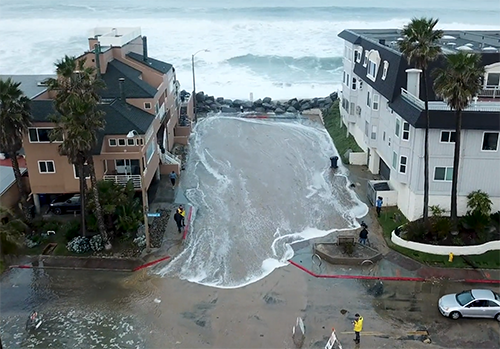
4. Tidepocalypse 2021-23
The most familiar tide cycles are twice-daily and twice-monthly. Then there are longer cycles. A twice-yearly tidal cycle occurs in summer and winter. A cycle every 4.4 years is driven by changes in the moon’s closest approach to Earth (perigee) relative to its orbit around the sun. And a 18.6-year lunar node cycle traces where the moon’s orbit intersects the ecliptic, the plane of the earth’s orbit around the sun.
All these cycles rarely if ever mesh perfectly, but they come close enough on occasion to enhance tidal heights by 15 centimeters (about six inches). A close coincidence of the 18.6- and 4.4-year cycles occurred in 1982-83, when sea level was also elevated temporarily another three to six inches at the time due to an unusually strong El Niño. On top of that, a series of powerful storms culminating during the highest tides of the year in 1983 brought storm surges and waves from just the right westerly direction to result in widespread flooding, beach erosion, and property damage to California.
Weather and ocean related damages in 1982-83 occurred worldwide. The bill at the end of it all hit $8 billion ($21 billion in today’s dollars), with $2.2 billion in California alone.
The next close coincidence of the peak high tide cycles will start in 2021 and last through 2023. The very highest predicted tidal peak of 2.2 meters (7.19 feet) – a height only exceeded three times in the 21st century – will be on July 13, 2022 in San Diego. Peaks will only be slightly diminished to about 2.1 meters (7 feet) during the winter storm seasons when chances of storm damage are expected to be much higher.
The damage to the West Coast could be similarly catastrophic if a strong El Niño develops and Pacific winter storms are as strong and follow similar tracks. California State Parks and Scripps coastal oceanographer Reinhard Flick says that close coincidence of all these tidal, El Niño, and storm and wave conditions is unlikely but possible. He also points out, though, that a few extra inches of sea-level rise have been added by climate change in the 30 years since 1982. All this makes the 2021-23 peak tide window worth watching.
“The times of tidal confluence is the one factor that is accurately predictable and these provide windows of heightened exposure,” Flick said.
For that reason, he suggests all lifeguards, public works officers, and emergency officials need to have this time period circled on their calendars.
“The lessons learned in winter 1982-83 helped prevent loss of life in the 1997-98 El Niño winter, which caused heavy river flooding among other damages, because the state and local emergency responders were spun up early on,” Flick said.

6. The Keeling Curve hits a milestone - again
A certain amount of damage related to climate change will be inevitable but researchers warn that passivity is not an option. Some projections of the Keeling Curve – the bellwether measurement of atmospheric carbon dioxide concentrations – have CO2 shooting past 440 parts per million (ppm) in 2030 on its way to levels as high as 750 ppm by 2100. It is still possible to stabilize CO2 levels if society can work toward cutting CO2 emissions by 50 percent as a first step. In concert with natural removal of CO2, that would be enough to level off global CO2 concentrations, said Scripps Oceanography geochemist Ralph Keeling, whose research group maintains the Keeling Curve started by his late father, also a geochemist at Scripps Oceanography.
“It’s still under our control to a large degree. Future damage is still going to be controlled by future emission so we still have an important control knob,” said Keeling, who anticipates that the urgency for climate action will only become more apparent to society this decade.
“The landscape for action is going to keep changing. It’s too bad that we’re at that stage but that’s where we’re at,” he said.
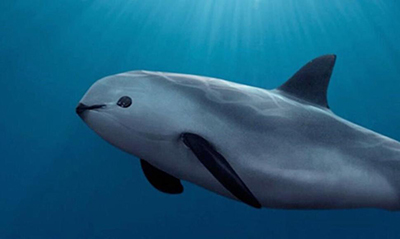
5. The end of vaquitas?
The next decade will likely bring the extinction of the vaquita, said Jay Barlow, a NOAA marine mammalogist and adjunct professor at Scripps Oceanography who has been part of efforts to document its demise and demand action to prevent it. Fewer than 20 of the porpoises exist in their native Gulf of California, with their numbers decreasing 50 percent every year. Despite efforts to protect them, vaquita still continually fall victim to illegal gillnet fishing. They are often killed by poachers who inadvertently catch them while looking for another endangered species, the totoaba, a fish prized for its swim bladder traded in black markets.
While extinctions are becoming increasingly common, the extinction of large mammals is still rare, Barlow said. The only other recorded extinction of a cetacean was of the Chinese River dolphin in 2006.
“If we cannot save a charismatic large mammal like this, what hope is there for all the other species?” Barlow asks.
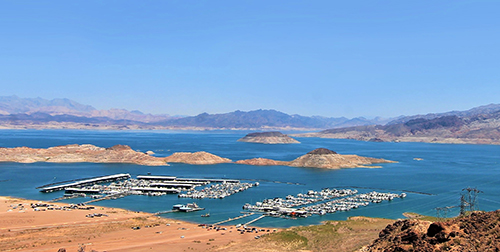
7. Lake Mead is still in trouble
In 2008, Scripps Oceanography researchers Tim Barnett and David Pierce gained global attention when they forecast that Nevada’s Lake Mead stood a 50-percent chance of going dry by this decade unless the Southwest cities and farms to which it supplies water started withdrawing less. The study helped expose the fact that decades of overconfidence among water suppliers had created delivery obligations nearly impossible to meet in the 21st century, and that the water supply's reliability would be reduced unless global warming was taken into account in the planning process.
A set of federal guidelines enacted around the same time led Lake Mead water users to create drought contingency plans and states have been successful in conserving water. The guidelines expire in 2026, however, and usage rights will be subject to renegotiation. The lake, meanwhile, has dropped to about 40 percent capacity between 2000 and 2018 and its natural intake is 16 percent less so far in this century than in the 20th century.
Pierce has contributed to an upcoming federal report on the future hydrology of the Colorado River and sees cause for concern that warming will continue to reduce runoff to the lake. He has his doubts about how the new normal will be received by the 25 million people who rely on it.
“I'm not sure people have wrapped their heads around the idea that not all users will be able to be accommodated 100 percent in the future, even if they are legally entitled to be so,” Pierce said. “That reckoning is still to come.”
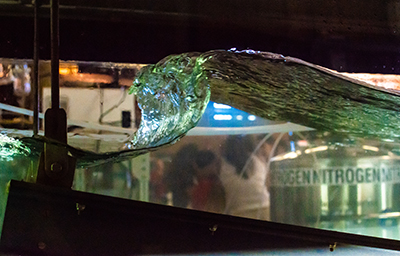
8. SOARS takes flight
The Scripps Ocean Atmosphere Research Simulator (SOARS), a new state-of-the art wind-wave channel that will mimic the ocean with unprecedented accuracy, will become operational in 2021.
The SOARS facility builds upon The Center for Aerosol Impacts on Chemistry of the Environment’s efforts to move the ocean and atmosphere into the lab for detailed studies. In a collaboration led by Scripps oceanographer Grant Deane, it will enable scientists to explore how the introduction of pollutants by human activities are changing the chemistry of the ocean and atmosphere. The wind-wave channel will also be the only one in the world capable of simulating future atmospheres with increasing pollution under different ocean conditions. It will allow scientists to control temperatures of the model ocean down to -15℃ (5℉) and form sea ice, as well as introduce high winds.
Kim Prather, an atmospheric chemist who holds a joint appointment between UC San Diego’s Scripps Institution of Oceanography and the Department of Chemistry and Biochemistry, is one of SOARS’ lead scientists. The facility will be an ideal tool for scientists who are moving toward more holistic research for studying natural-human interactions, she said.
“We will have the ability to study interactions between oceans, microbiology, ecosystems, atmosphere, clouds, and climate all in one place,” Prather said. “We can use it to simulate future scenarios such as high CO2 levels, warmer oceans, ecosystem impacts from wildfire ash deposition to the ocean, and more in this system. That will allow us to better plan for the future by understanding how the natural system will respond to impacts from further human pollution.”
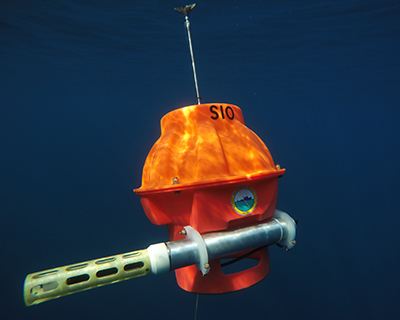
9. A new generation of sensors to measure heating of the oceans
The unending urge of those who study the ocean is to increase the scope of ocean measurements. In the 2000s, the Argo network of robotic floats revolutionized ocean science by allowing for global coverage with increased frequency of measurements of the fundamental variables – temperature, salinity, and current for the first time. But the original Argo floats could only reach 2,000 meters (6,500 feet) deep and kept to these fundamental basic measurements. The next generation of floats including two new styles – Deep Argo and Biogeochemical Argo floats – will continue to be deployed throughout all ocean basins and hopefully reach global coverage by the end of the decade.
There are currently 111 Deep Argo floats, which can sink to at least 4,000 meters (13,000 feet) deep, in operation. More than 60 of them are of the Deep SOLO model built at Scripps capable of reaching 6,000 meters (20,000 feet). In 2020, 47 more Deep Argo floats will be added, contributing to the goal of maintaining a total of 1,250 active deep floats spread around the globe.
Biogeochemical Argo adds a package of instruments to the basic model that measures levels of oxygen, nitrate, chlorophyll and pH. It also measures the quantity of suspended particles such as algae and bacteria and the extent to which sunlight penetrates the ocean. All these measurements get at the health of the organisms within the ocean and monitor the chemistry of the ocean, such as any change in the oxygen and carbon levels. There are 367 “BGC” floats in operation now, with a varying number of additional sensors.
The goal is to maintain at least 1,000 active BGC floats spread throughout the global ocean that carry all six additional BGC sensors by 2030, said Argo scientist Sarah Purkey.
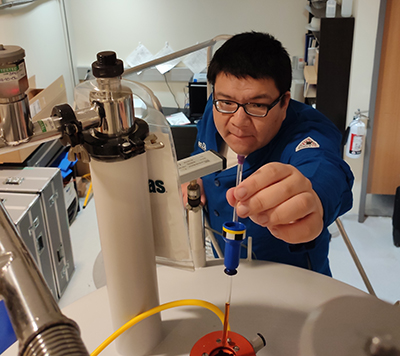
10. SMART is getting smarter
The reach of artificial intelligence is extending to nearly every branch of ocean and earth science that requires large-scale data analysis. A prime example of that is the natural products chemistry program at Scripps Oceanography.
In 2017, William Gerwick, who holds a joint professorship at Scripps’ Center for Marine Biotechnology and Biomedicine and the Skaggs School of Pharmacy and Pharmaceutical Sciences at UC San Diego, and Gary Cottrell of UC San Diego’s Computer Science and Engineering Department, unveiled SMART (Small Molecule Accurate Recognition Technology), a structural recognition program for molecules to accelerate drug discovery.
There are already 18 chemicals derived from marine organisms that have been approved as antibiotics, anticancer drugs, lipid lowering drugs, and other helpful therapies. With technical advances like SMART, by 2030, “I think we’ll see that number grow several-fold,” said Gerwick.
SMART uses artificial intelligence to put molecules found in nature in a chemical context. With the emergence of SMART 2.0, the technology now has a library of 62,000 compounds in its memory that is available to the research community. Gerwick’s team recently employed it to find a compound that displayed anticancer activity. The team is working on even newer iterations of SMART but for Gerwick, the thrill of identifying that compound and others has already been revolutionary.
“It would have taken weeks to figure out where we were in that structure class alone,” Gerwick said of the find. “We would have had to build it atom by atom. Now that process takes about eight seconds.”
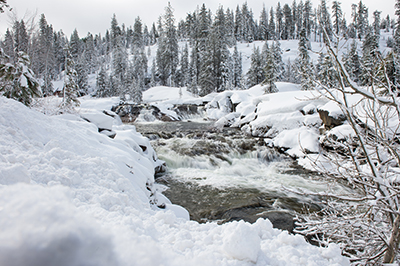
11. A new way to track changes in California’s water storage
One of the major challenges of the 21st century will be securing freshwater and preserving natural ecosystems under increasing climate stress. While freshwater in lakes and rivers is easy to measure, water locked in snowpack, groundwater, and soil moisture––all critically important to human and natural systems––is much less amenable to monitoring and management. In response, geodetic techniques historically used to track the slow deformation of Earth’s surface under forces of plate tectonics have been leveraged in new ways to address the challenge of water monitoring.
Scripps has a storied history of developing the theory used to study the effect of ocean tides on the shape of the solid Earth. Recently the theory has been applied to the new problem of tracking freshwater in the earth system. Today, Scripps scientists use data from a vast network of Global Positioning System (GPS) stations to track the vertical motion of Earth’s surface due to changes in water storage.
The weight of water delivered by big storms such as atmospheric rivers and hurricanes can press the crust downward by millimeters, easily observable by GPS, said Scripps Oceanography geophysicist Adrian Borsa. In turn, the loss of water during long droughts causes the crust to rebound. Interpreted through the lens of geophysics, the subtle ups and downs of Earth’s surface reveal freshwater availability at the scale of individual watersheds to continents.
The concept will be increasingly applied in the next decade in California, where resource managers are incorporating GPS technology into water availability forecasts.
“In a future where water security can no longer be taken for granted, the ability to provide critical and timely information on water storage, using infrastructure built for another purpose altogether, showcases how innovative, informed science can benefit society,” Borsa said.
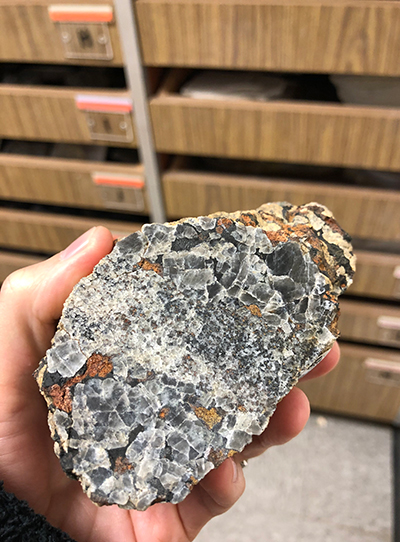
12. A geology renaissance
The quest to transition more rapidly to greener and cleaner infrastructure means a race is on to find reserves of critical elements such as lithium, cobalt, nickel, and rare earth elements needed for electric vehicle batteries and solar panels. Scripps Oceanography geologist Emily Chin studies the geochemistry of Earth’s crust and its tectonic evolution, implications of which can help better predict where to find minerals of interest. Chin anticipates a renaissance of fundamental chemistry, mineralogy, petrology, and materials science – the kinds of disciplines needed to guide such explorations – as the decade progresses.
Chin said that along with better recycling methods, new approaches are needed as terrestrial mineral deposits are exhausted and industries look to the seafloor or even space for new sources of elements. What will be vital is that these new methods be developed with sustainability and environmental protection in mind.
“Mining the deep sea is already starting. It's somewhat of a Wild West, and if we're not careful, we could do even more damage to the environment with so-called ‘clean’ technologies,” Chin said.

13. The emergence of a climate emergency response industry
Because mitigation of climate change consequences has come up short, David Victor sees industries, academics and scientists rising to meet the demands of a world that can’t wait any longer. The decade will see the first commercial scale direct-air capture projects in which machines remove carbon dioxide from the air at great scale (and great cost). Carbon farming – in which carbon is harvested from the air and sequestered in the earth to aid plant growth – is in the blueprint stage. Ecosystem engineering projects — imagine putting an entire coral reef on life support until it stabilizes – are being talked about. A new science and engineering of emergency response will gain a lot more attention and resources.
“In the 2020s we will see a lot more because the math about the carbon budget and the insights of climate impacts research lead, inexorably, to the conclusion that climate change could be very rapid and very ugly,” said Victor. “I suspect we will be focusing on lots of things that nobody thought would be taken seriously in a world where we thought we were on track to stop warming quickly and at low levels.”
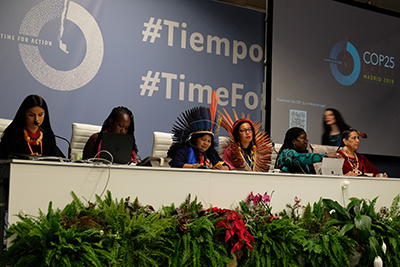
14. Using traditional practices to move forward
At 2019’s COP25 climate conference in Madrid, representatives of indigenous peoples noted that in regards to many aspects of nature, science is only now able to describe what they have known for millennia. The research community is now among many recognizing that indigenous people should play a leading role, rather than a token role, in reversing the damage of climate change.
Society may come to see that adaptation to destabilized climate is a matter of remembering how people managed relative harmony with nature for eons as much as it is about imagining new technologies. Jade Guedes, an assistant professor in the Department of Anthropology and Scripps Institution of Oceanography at UC San Diego who studies how ancient civilizations have responded to changes in climate, sees Australia’s bushfires as a prime example of Western society’s cultural chauvinism wreaking havoc.
Humans have occupied Australia for 65,000 years and used small-scale managed burning to clear forests and bush of dry, dead material and to increase biodiversity of plant and animal resources for human consumption, she noted. Forest conservation efforts outlawed these practices which has resulted in decades long load of combustible material accumulating.
As a result, exactly what indigenous groups were afraid would happen did happen.
“On the adaptation front, there is an increasing realization that traditional and indigenous methods of land management play an important role in allowing humanity to be resilient in the face of changing climate,” Guedes said.
Isabel Rivera-Collazo, who like Guedes, studies climate change through the lens of anthropology at UC San Diego, has been racing to study ancient coastal settlement sites before they are lost to rising seas. She said ignoring indigenous knowledge has cost society precious time.
“Ignoring the observations, the calls for action, and the adaptation suggestions from indigenous peoples has severely delayed global efforts to mitigate climate change,” Rivera-Collazo said. “The severity of the climate crisis we are facing requires collaboration between western and traditional knowledge. We scientists have to work harder to develop clear ethical guidelines to empower indigenous groups to identify their own risks, protect their knowledge, and help the rest of the world to understand climate change."
– Robert Monroe